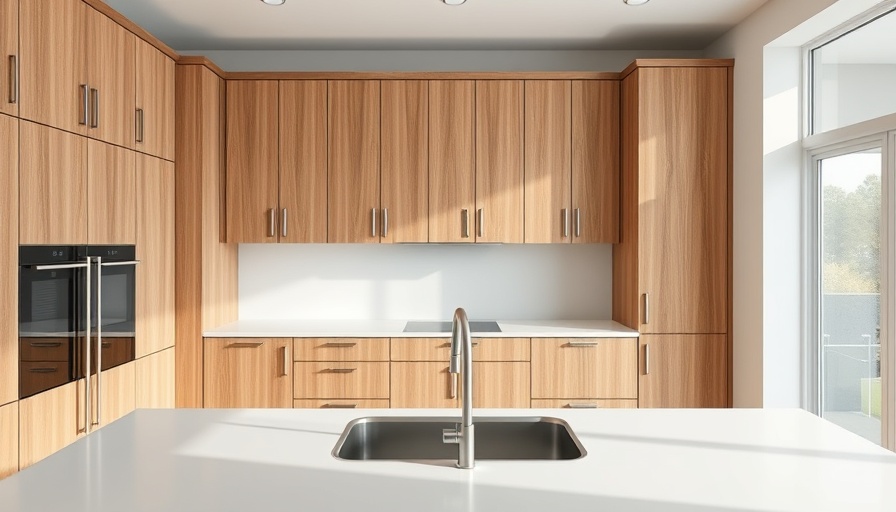
Choosing the Right Garage Keypad: A Homeowner’s Guide
The garage door opener keypad may seem like a straightforward purchase, but as we explore in Which Garage Keypad Should You Buy (And Not Buy) in 2025?, there are many factors to consider when selecting the right option for your home. With options ranging from traditional models to modern, tech-savvy keypads, understanding their differences can save you from potential inconveniences.
In Which Garage Keypad Should You Buy (And Not Buy) in 2025?, the discussion dives into the pros and cons of various garage keypads, exploring key insights that sparked deeper analysis on our end.
Understanding Your Options: Traditional vs. Smart Keypads
Homeowners today face a choice between traditional keypads, like those from Chamberlain, and more modern counterparts, including the MyQ series. The simplicity of a traditional keypad—relying on a four-digit PIN without needing Wi-Fi connectivity—appeals to many. It’s reliable, easy to use, and can last for years on a single 9V battery. In contrast, the MyQ models promise smart features but initially may require an app for full functionality.
Many buyers are often misled by marketing terms suggesting 'smart' capabilities in devices that do not require app integration. Thus, assessing what you truly need from a keypad is vital. If automatic operation or remote control via a smartphone app is important to you, ensure that any keypad matches those expectations before purchase.
Battery Life: A Critical Factor
The importance of battery life cannot be overstated. Homeowners often overlook that a keypad requires a battery, and a long-lasting one can mean the difference between convenience and constant maintenance. Based on homeowner feedback shared in the video, traditional keypads have demonstrated exceptional longevity, often lasting years without battery changes. Conversely, the newer video keypads have raised concerns due to their short battery life, which can only last 2.5 weeks without recharging.
Such inefficiencies not only impact usability but also introduce inconvenience, especially for busy families who may not have time to recharge devices frequently. As noted in the assessment of the video keypad, if a product’s battery life is inadequate, its value diminishes significantly.
Cost vs. Functionality: Making the Smart Choice
Another key factor is the cost of the keypad versus the features it offers. The old-fashioned keypad typically costs around $45, while new variations can climb to $80—often without tangible benefits. Many homeowners report feeling that while the newer options may offer bells and whistles, the core functionalities remain the same. Essentially, it’s crucial to ask whether the additional cost justifies the extra features.
Moreover, paying for a subscription to access advanced features, like video recordings, can further add to the total cost of ownership. Is it worth it for your family? For most, particularly those on a tighter budget, sticking to reliable models may be the prudent option.
Long-term Considerations: Reliability Matters
When making a choice for home technology, reliability is paramount. A keypad that provides consistent operation year after year is often worth its weight in gold. As shared in the video transcript, many homeowners may find themselves returning to trusted brands like Chamberlain for their durability.
It is wise to think long-term in making your selection. By opting for a model known for its reliability and battery efficiency, you can avoid the need for frequent replacements, which ultimately saves you time and money.
Decisions You Can Make With This Information
Armed with the insights gathered, homeowners can make informed decisions based on the performance of different keypad models. Understanding the core features, battery life, cost, and reliability will enhance the purchasing process. If a simple and effective design fits your needs, opting for traditional models will likely serve you well. For those requiring features like remote access and video monitoring, careful research into newer products is essential.
Ultimately, it boils down to how you wish to utilize your garage access. By considering the options available and their respective advantages and disadvantages, your choice can enhance the convenience and security of your home.
In conclusion, selecting the appropriate garage keypad involves evaluating functionality, reliability, and your long-term needs as a homeowner. Through solid research and practical insights, you can find a product that best aligns with your lifestyle. Now, if you're ready to take a step towards making your garage more efficient and secure, consider purchasing a reliable keypad today!
 Add Row
Add Row  Add
Add 




Write A Comment